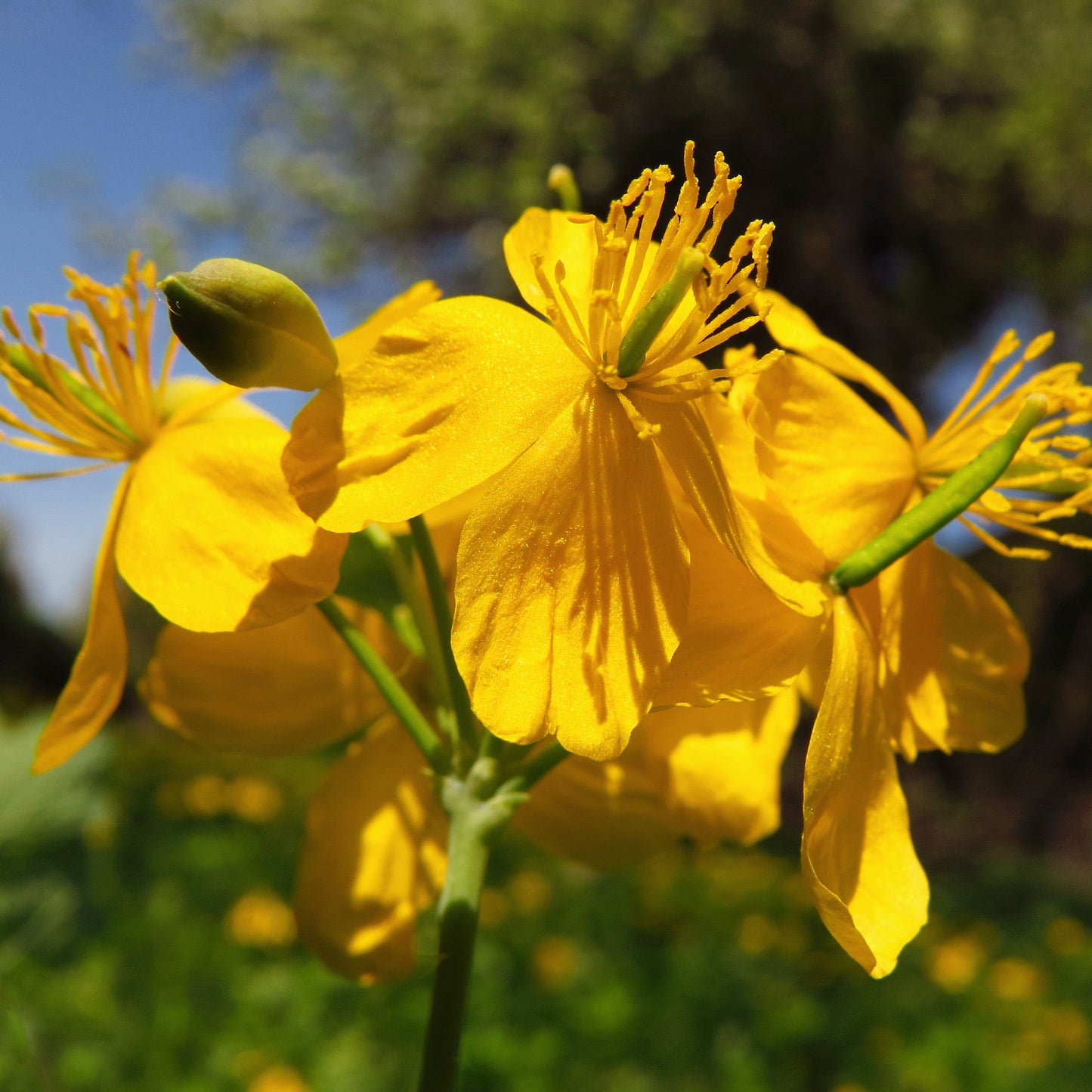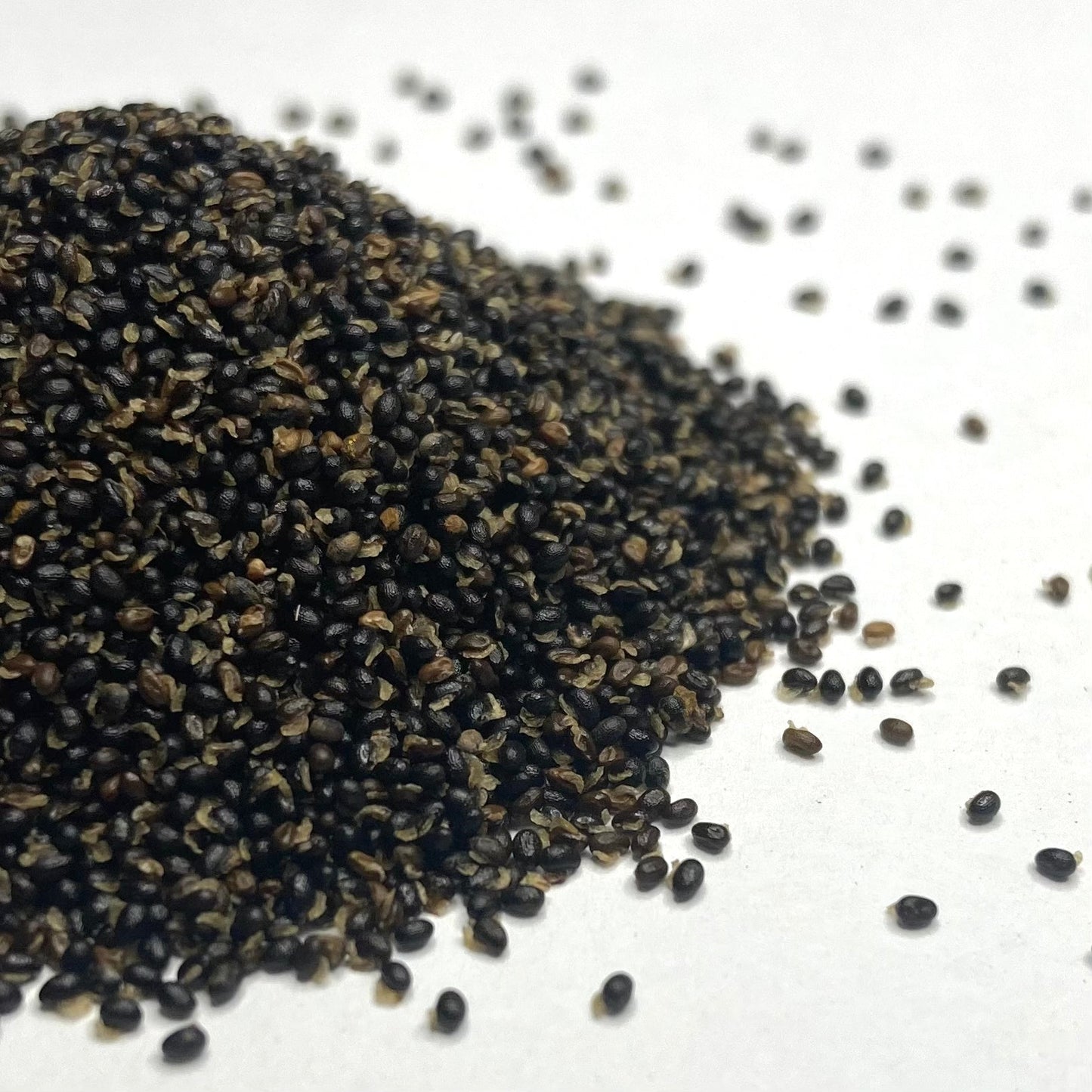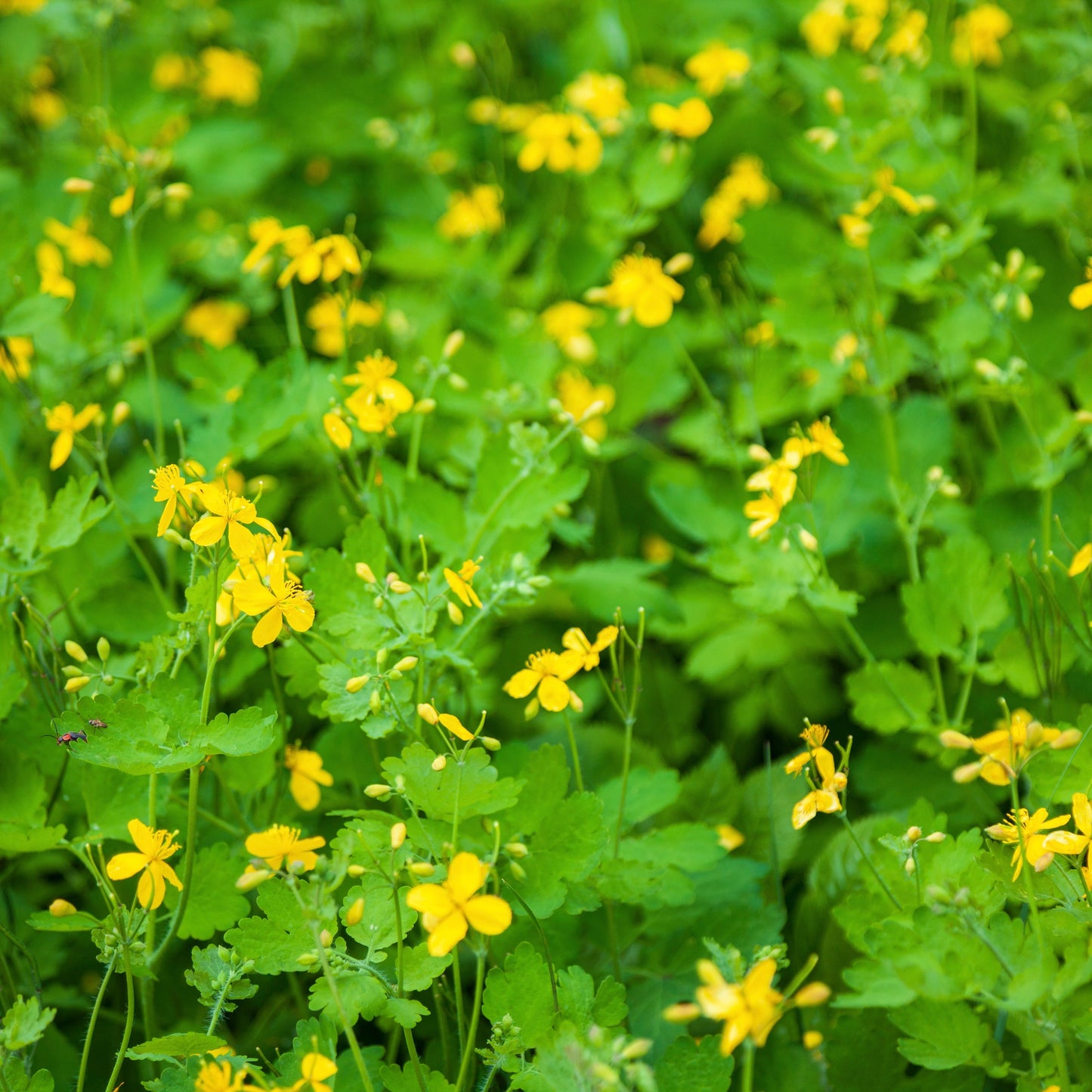Celandine (Chelidonium majus)
List Price: $4.00
Couldn't load pickup availability
*Designated an invasive species in the following states, no sale: MI, NH, PA
The reaching sunny blossoms of Greater Celandine make for a brightening addition to the summer landscape, where it can be seen growing quite gladly under a variety of conditions. A member of the poppy family, various parts of this plant release a yellow juice upon injury. One should note that this sap can be an irritant to skin and eyes. However, through Ancient Greece and the Middle Ages, Chelidonium majus was admired particularly for relief of skin ailments, jaundice, and eye conditions. Folk medicine indicates the juice or salves of the plant for topical use, and an infusion taken to better liver health (particularly recorded in Eastern European cultures).
Celandine has an important use throughout history as a dye plant— the ground roots, stems, and leaves of this plant can be boiled and processed to create a buttery or straw-yellow pigment. Its potency as a coloring agent can be easily intuited in witnessing the orange sap that oozes from both the crushed flowers and disturbed roots (one can also derive orange dye from Chelidonium majus). Through the middle ages, the dye of this plant was well known, from tinting manuscripts to women’s hair.
Bees and Syrphid flies are visitors to celandine flowers, and ants are fond of the food appendages (elaiosomes) found within the seed pod— travel via ants allows for greater seed dispersal.
The word ‘celandine’ is derived from the Greek word ‘chelidon,’ which refers to a swallow. It is said the herb blooms when swallows arrive for the season, and fades as they depart. According to writings from the Roman philosopher Pliny the Elder, it was swallows who discovered that the juice of Celandine could help remove film from the cornea of blind nestlings to restore their vision— a dual reason for the avian naming of the plant. Archaic texts state that breathing in Celandine will curtail arguments between spouses. The 19th century poet William Wordsworth was so fond of Chelidonium majus that he had its star-shaped flower engraved onto the entrance of his tomb— all these anecdotes are a further indication of the hold this starry herb has had on human imagination for centuries.







